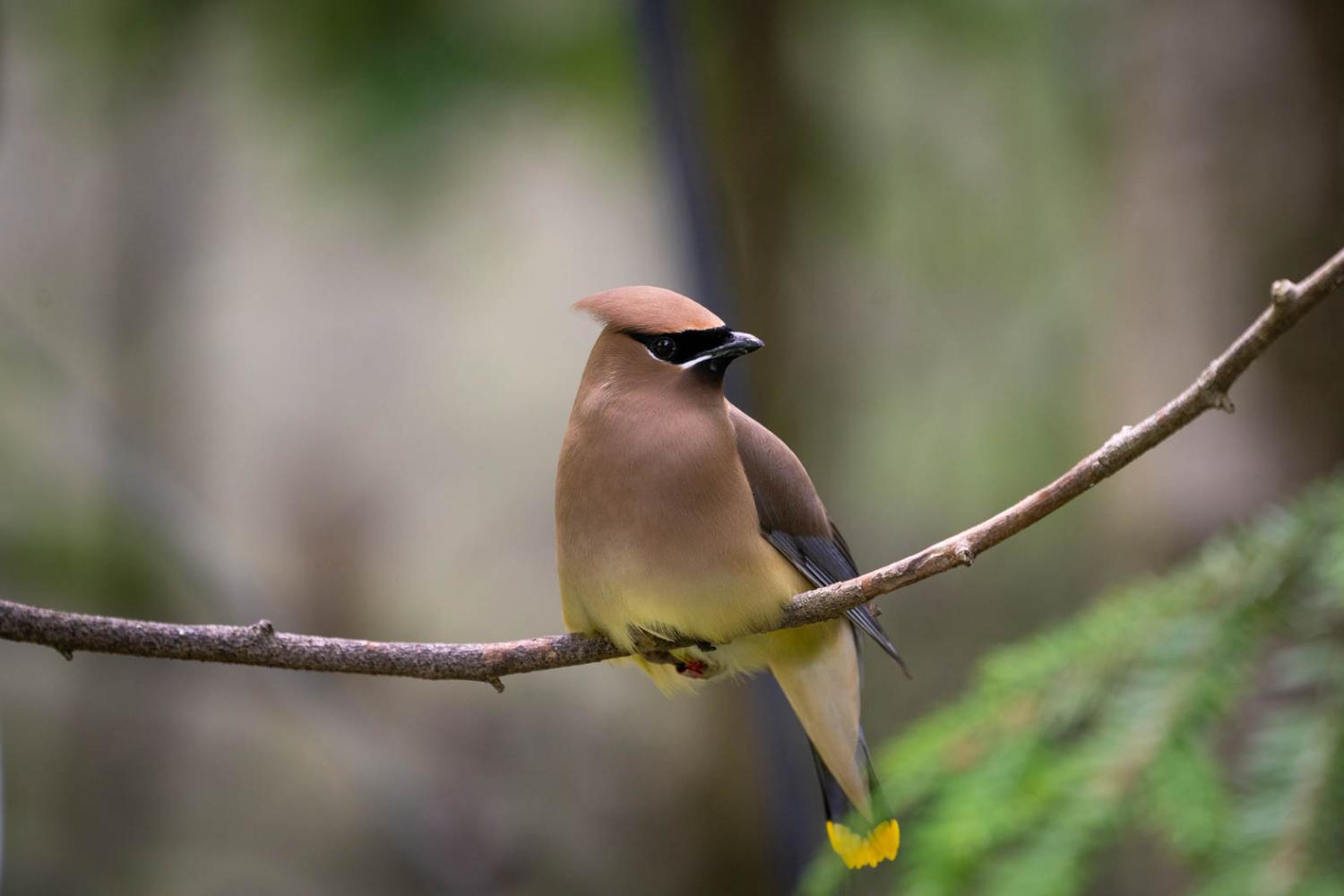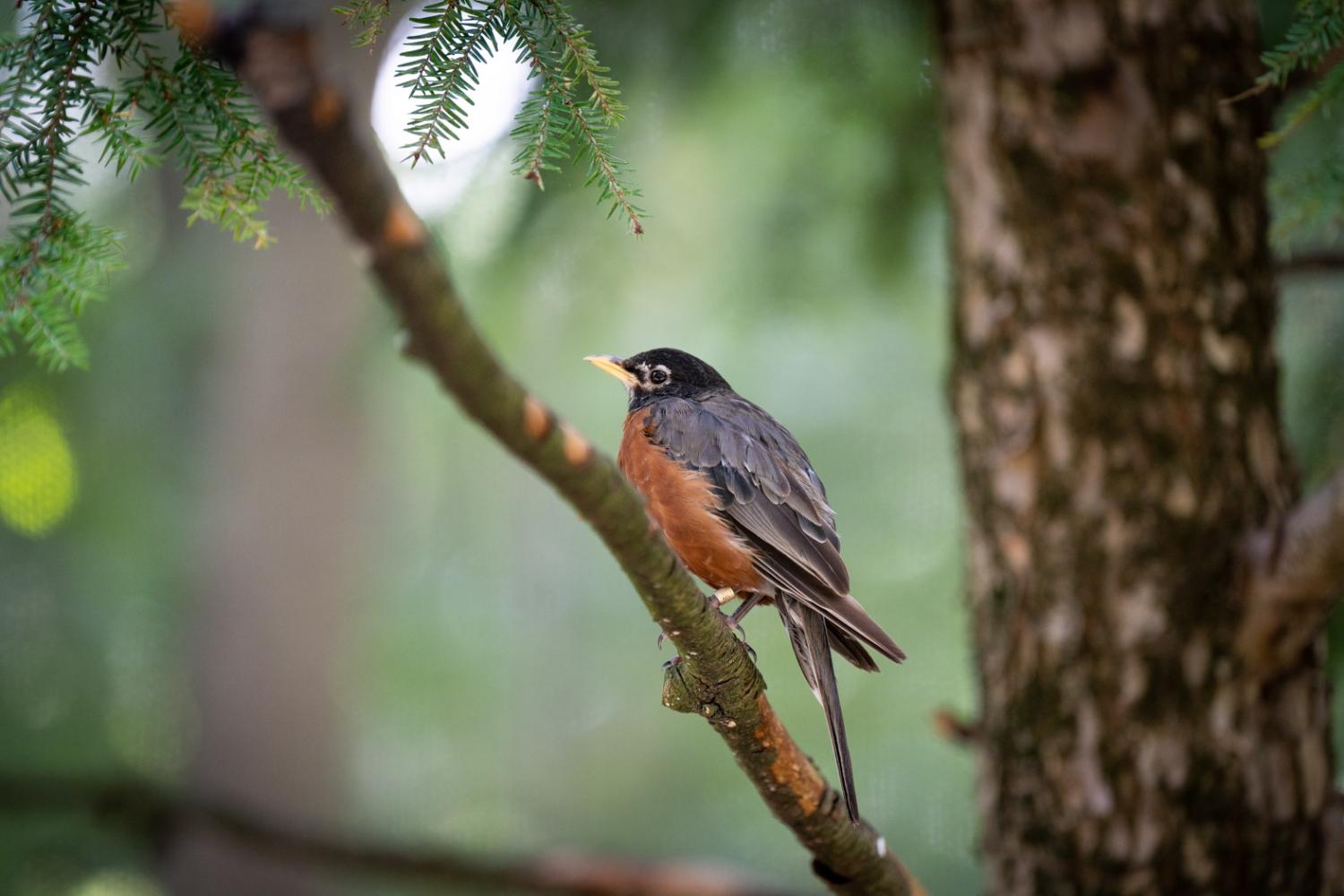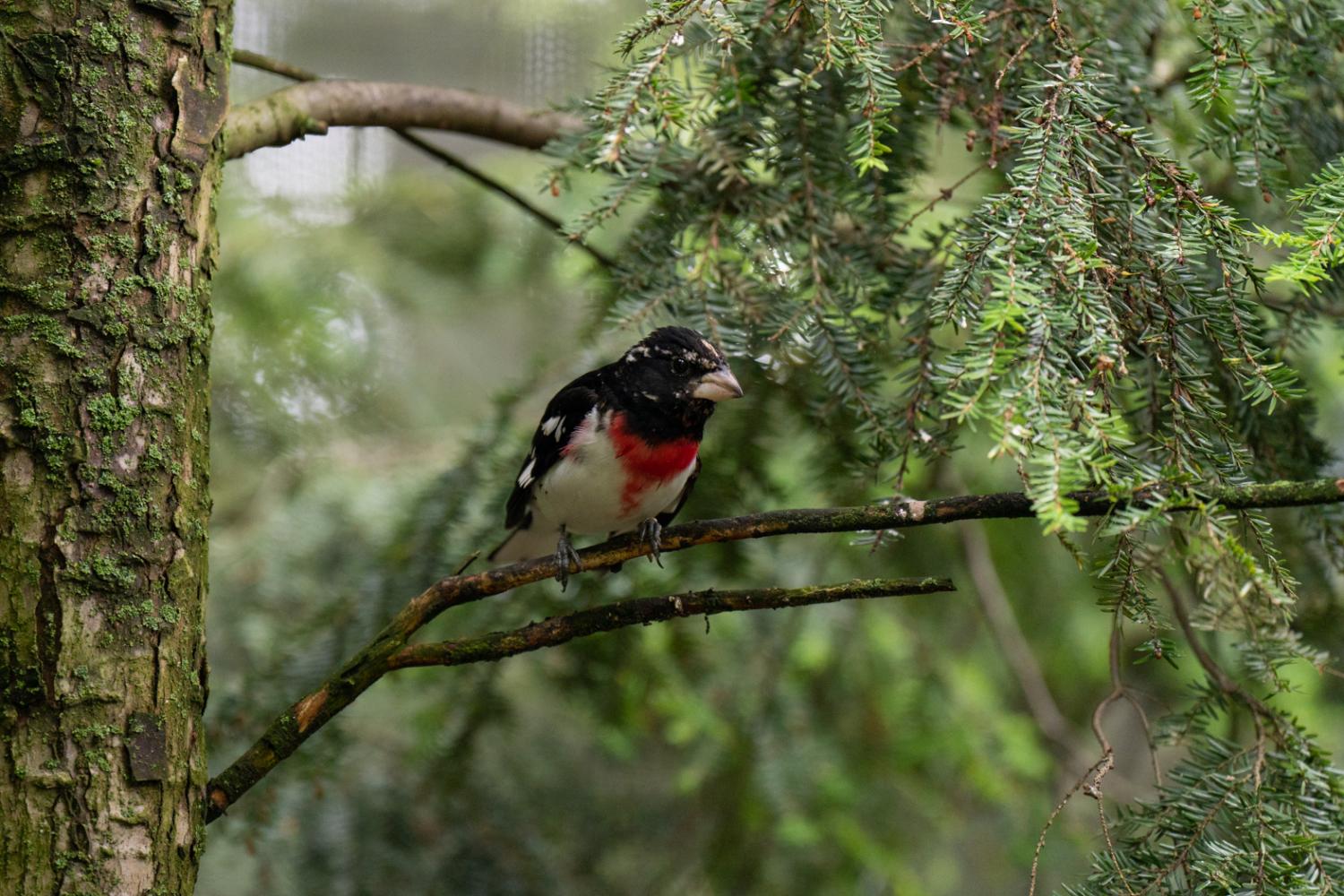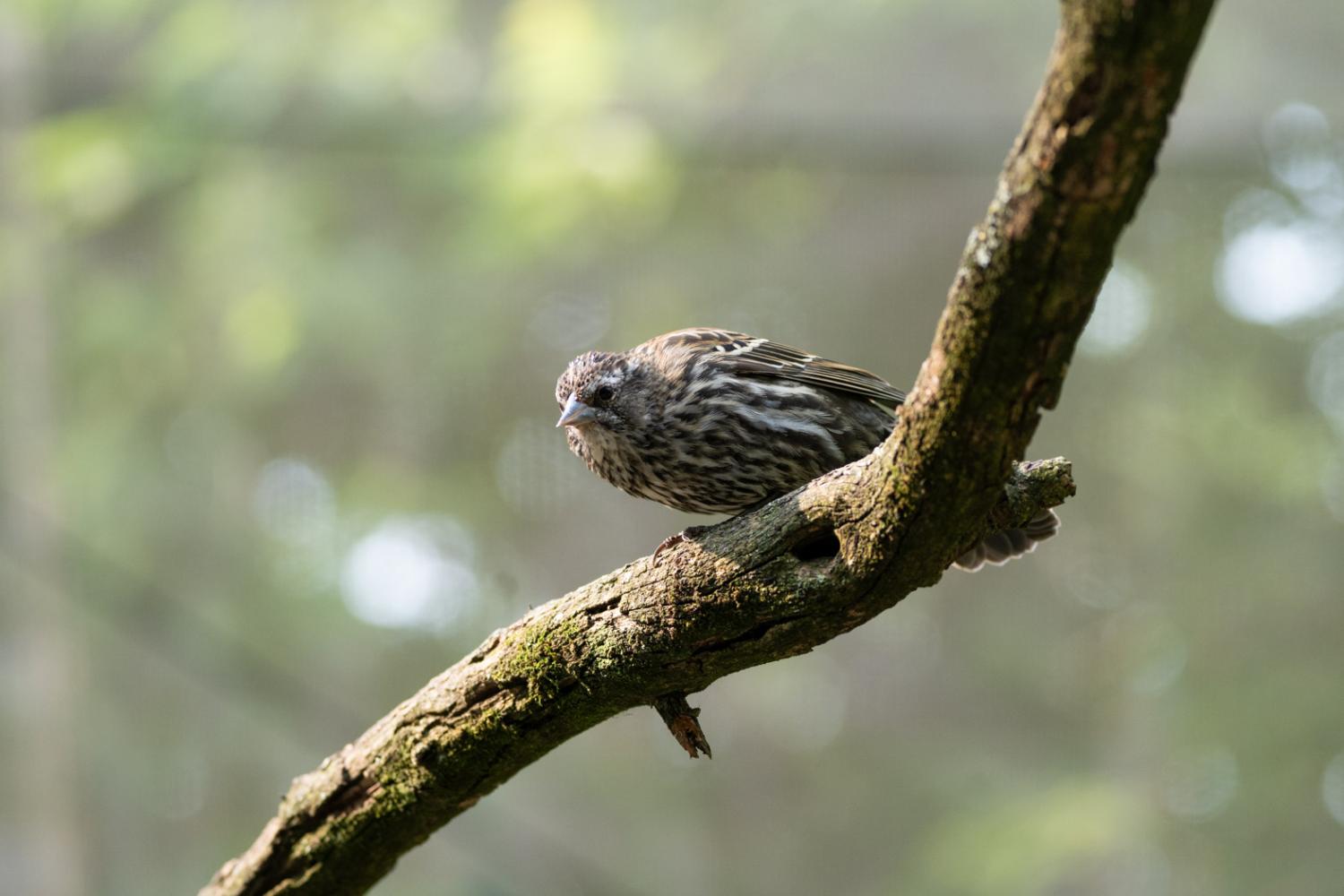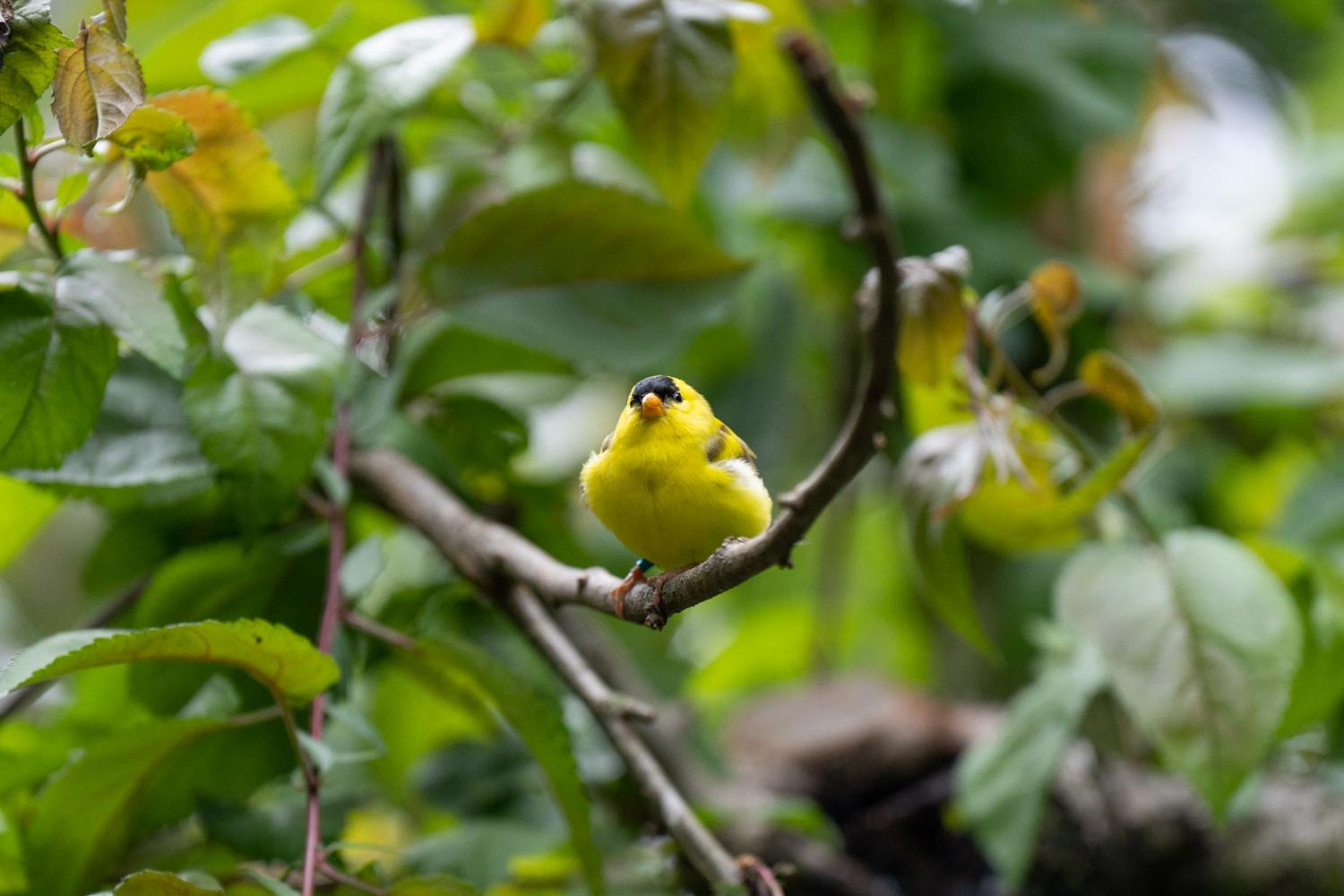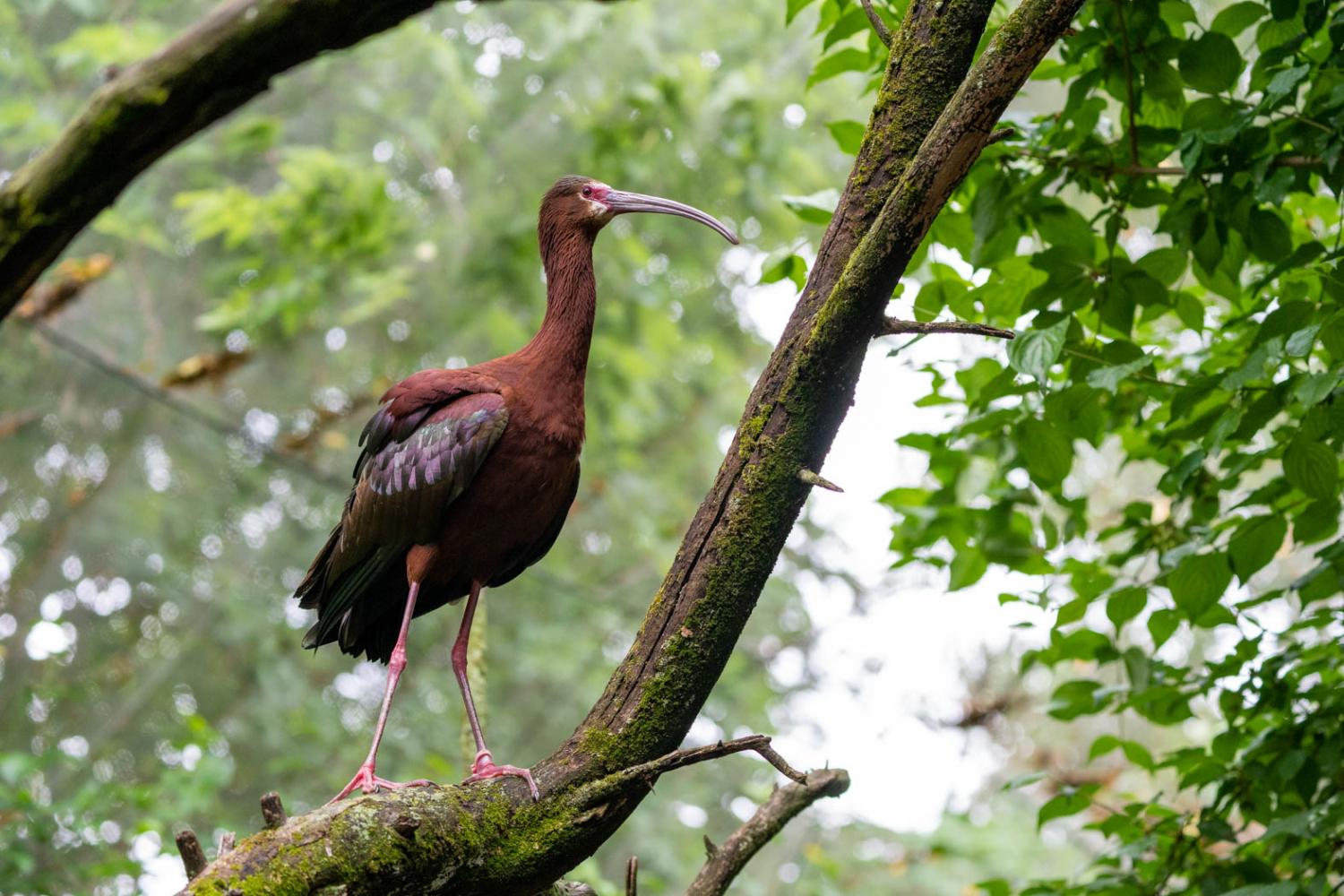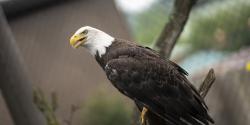A walk through the North America Trek Aviary at the Columbus Zoo and Aquarium will prove to be a relaxing and tranquil experience!
So, where did these birds come from?
Most of the birds in the North America Trek Aviary came to the Columbus Zoo from wildlife rehabilitators, and each has been injured in some way that prevents it from surviving in the wild. Our Animal Care staff provides food, shelter, and habitat that closely mimic their native surroundings.
As guests slowly stroll down the wooden plank path, they'll notice signs that offer an abundance of information that they can immediately use when they return home and see the same species of birds in their yards and in their communities!
Let's meet some of the birds.

